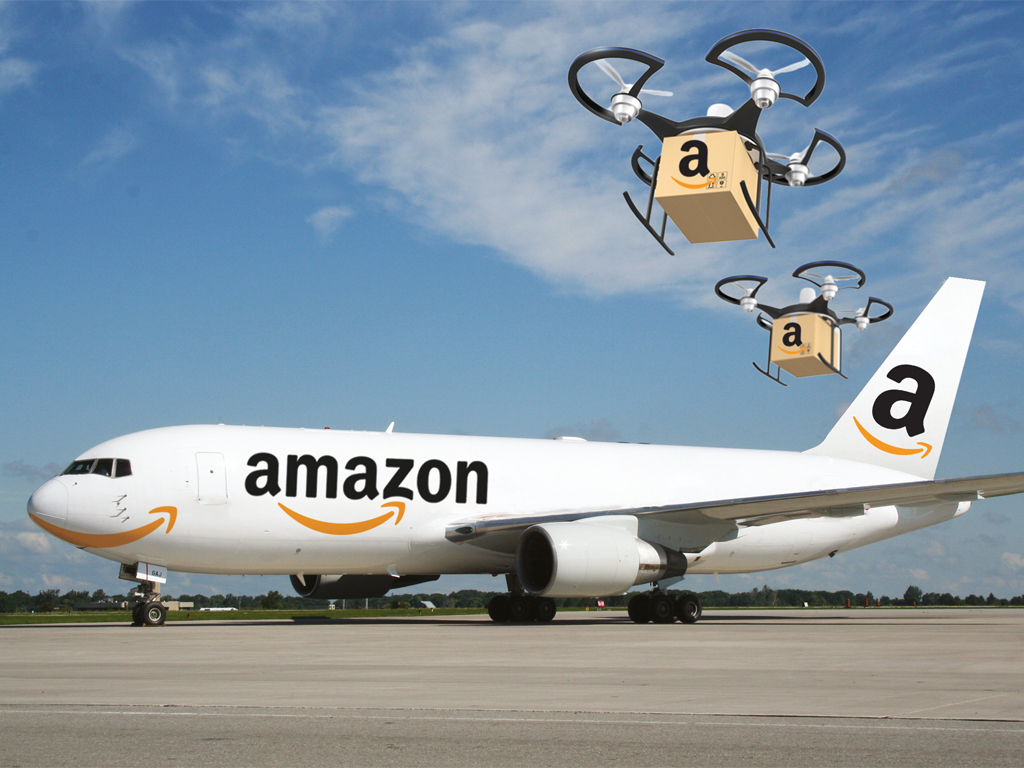The Amazon effect pushes cargo service levels
12 / 04 / 2018

The lot of a consignee resembles that of a grand prix driver, only in reverse. The latter spends his working hours in a super-fast car and then drives home in a much slower vehicle.
The consignee orders goods online, expecting same-day or two-day delivery with an alert on his smartphone an hour before the shipment arrives on his doorstep, whereas the goods ordered for his business seem to drop into a black hole after they leave the factory, except for the odd status update when they pass certain milestones.
Brian Bourke, vice-president of marketing at SEKO Logistics, likens the difference to time travel from 2018 to the 1990s in terms of the experience with software and technology.
Service expectations
Increasingly, consignees find this
unacceptable. At Stifel’s annual Transportation & Logistics Conference in February, a panel of shippers and logistics executives discussed the ‘Amazon effect’ — consignees demanding comparable service levels to their personal online shopping experience.
Panelists reported a clear trend towards expectations shaped by online shopping logistics. This may seem inevitable in the retail sector, but it is also spreading to other industries, some panelists noted.
“Companies are ordering much more online,” observes Albert Saphir, principal of logistics consulting firm ABS Consulting.
Bob Imbriani, executive vice-president international at forwarder Team Worldwide, remarks that the ‘Amazon effect’ is not confined to business-to-business (B2B) e-commerce, it is also manifesting itself in B2B airfreight and expedited shipping.
“Shippers ask: ‘If I have visibility on my phone for personal packages when they are going to be delivered to my door, why can’t I get a notice that a shipment will be at my dock in one hour?’” he says. “There is pressure to track in real time. Shippers expect more visibility”.
Many also have expectations about the channel of communication. “They don’t want emails; they look for apps on the phone,” Imbriani says.
Team Worldwide has spent time on developing such apps over the past year and will continue to do so.
“It’s always a work in progress,” says Imbriani, adding that the challenge does not lie in the creation of the app but in gathering the information to populate it, which has to draw in truckers and other links in the supply chain.
The ‘Amazon effect’ goes beyond visibility to price and transit time, although nobody in the B2B world expects free delivery.
Imbriani finds that shippers’ expectations are primarily focused on visibility. “It’s not so much on transit time, although they do look for the fastest time at the cheapest rate,” he observes.
Regardless of whether or not they use it, B2B clients expect a next-day or same-day option at a reasonable rate, remarks Bourke.
This presents challenges for the logistics provider, but it also offers an opportunity to add more value.
UPS certainly sees an opportunity in the transit time. In February, it introduced a guaranteed midday delivery service for international freight shipments originating in
71 countries and shipped to 35 destination countries.
The new offering, which is under the integrator’s ‘Worldwide Express Freight’ product, guarantees delivery at 12 pm or 2 pm for palletised shipments of more than 150 pounds.
Transit times are one to two days from Asia, Europe and the Americas to the US; also one to two days from Hong Kong to the US, Canada, Europe and Asia-Pacific markets; and two to three days from Asia-Pacific and the Americas to Europe.
Saphir is not convinced that this will find many takers: “I think the express carriers try to slice and dice delivery times so they can make an extra penny. It gets confusing.”
Omni-channel distribution
For parcel carriers, B2B is not merely approximating business-to-consumer (B2C), the two are actually converging. John Ferguson, president and chief executive of Purolator Courier, a subsidiary of Canada Post and the country’s largest express operator, notes that more and more shippers have both B2B and B2C streams.
Furthermore, many are shifting to online platforms and omni-channel distribution of their products, he adds.
This bundles B2B and B2C traffic for Purolator. “Our clients give us everything to handle – B2B and B2C,” Ferguson says. According to him, this trend is led by retail firms, but companies in other sectors are moving in the same direction.
The trend has led to different patterns in daily volumes. Purolator performs more weekend deliveries, and volumes have gone up on Mondays and Tuesdays owing to consumer orders placed during the weekend.
According to Bourke, the impact on supply chains goes beyond this. E-commerce is ushering in a shift to demand chain management, he says.
“You change all your internal processes in tune with demand rather than supply. You start with the customer experience and work backwards from there,” he says.
Read more airfreight disruptor news














